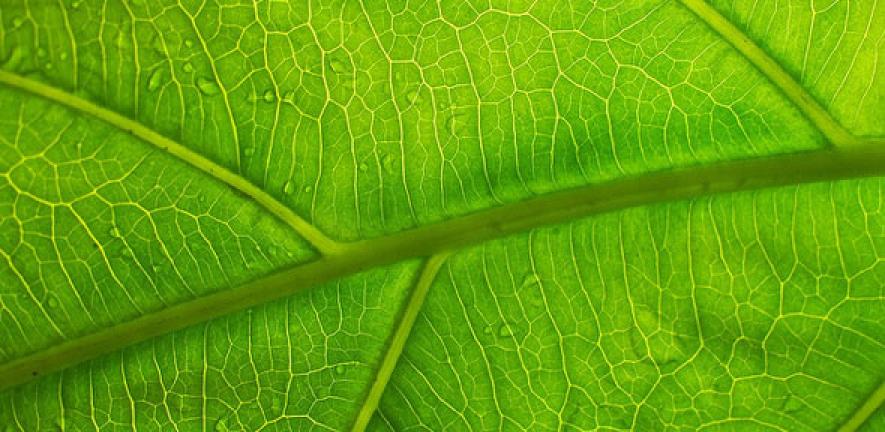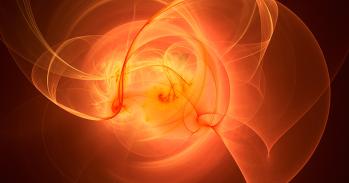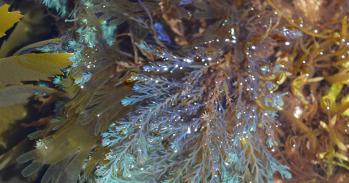
The natural structure found within leaves could improve the performance of everything from rechargeable batteries to high-performance gas sensors, according to an international team of scientists.
The natural structure found within leaves could improve the performance of everything from rechargeable batteries to high-performance gas sensors, according to an international team of scientists.
the adaptation could benefit a wide range of porous materials
Prof Bao-Lian Su
The researchers have designed a porous material that utilises a vascular structure, such as that found in the veins of a leaf, and could make energy transfers more efficient. The material could improve the performance of rechargeable batteries, optimizing the charge and discharge process and relieving stresses within the battery electrodes, which, at the moment, limit their life span. The same material could be used for high performance gas sensing or for catalysis to break down organic pollutants in water.
To design this bio-inspired material, an international team comprising scientists from China, the United Kingdom, United States and Belgium is mimicking the rule known as ‘Murray’s Law’ which helps natural organisms survive and grow. According to this Law, the entire network of pores existing on different scales in such biological systems is interconnected in a way to facilitate the transfer of liquids and minimize resistance throughout the network. The plant stems of a tree, or leaf veins, for example, optimize the flow of nutrients for photosynthesis with both high efficiency and minimum energy consumption by regularly branching out to smaller scales. In the same way, the surface area of the tracheal pores of insects remains constant along the diffusion pathway to maximize the delivery of carbon dioxide and oxygen in gaseous forms.
The team, led by Prof Bao-Lian Su, a life member of Clare Hall, University of Cambridge and who is also based at Wuhan University of Technology in China and at the University of Namur in Belgium, adapted Murray’s Law for the fabrication of the first ever synthetic ‘Murray material’ and applied it to three processes: photocatalysis, gas sensing and lithium ion battery electrodes. In each, they found that the multi-scale porous networks of their synthetic material significantly enhanced the performance of these processes.
Prof Su says:
“This study demonstrates that by adapting Murray’s Law from biology and applying it to chemistry, the performance of materials can be improved significantly. The adaptation could benefit a wide range of porous materials and improve functional ceramics and nano-metals used for energy and environmental applications.”
“The introduction of the concept of Murray’s Law to industrial processes could revolutionize the design of reactors with highly enhanced efficiency, minimum energy, time, and raw material consumption for a sustainable future.”
Writing in Nature Communications this week, the team describes how it used zinc oxide (ZnO) nanoparticles as the primary building block of their Murray material. These nanoparticles, containing small pores within them, form the lowest level of the porous network. The team arranged the ZnO particles through a layer-by layer evaporation-driven self-assembly process. This creates a second level of porous networks between the particles. During the evaporation process, the particles also form larger pores due to solvent evaporation, which represents the top level of pores, resulting in a three level Murray material. The team successfully fabricated these porous structures with the precise diameter ratios required to obey Murray’s law, enabling the efficient transfer of materials across the multilevel pore network.
Co-author, Dr Tawfique Hasan, of the Cambridge Graphene Centre, part of the University’s Department of Engineering, adds:
“This very first demonstration of a Murray material fabrication process is incredibly simple and is entirely driven by the nanoparticle self-assembly. Large scale manufacturability of this porous material is possible, making it an exciting, enabling technology, with potential impact across many applications.”
With its synthetic Murray material, with precise diameter ratios between the pore levels, the team demonstrated an efficient breakdown of an organic dye in water by using photocatalysis. This showed it was easy for the dye to enter the porous network leading to efficient and repeated reaction cycles. The team also used the same Murray material with a structure similar to the breathing networks of insects, for fast and sensitive gas detection with high repeatability.
The team proved that its Murray material can significantly improve the long term stability and fast charge/discharge capability for lithium ion storage, with a capacity improvement of up to 25 times compared to state of the art graphite material currently used in lithium ion battery electrodes. The hierarchical nature of the pores also reduces the stresses in these electrodes during the charge/discharge processes, improving their structural stability and resulting in a longer life time for energy storage devices.
The team envisions that the strategy could be used effectively in materials designs for energy and environmental applications.
The research was partially supported by the Royal Academy of Engineering.
Reference
Xianfeng Zheng et al: ‘Bio-inspired Murray materials for mass transfer and activity’ Nature Communications 6th April 2017
DOI:10.1038/ncomms14921

The text in this work is licensed under a Creative Commons Attribution 4.0 International License. For image use please see separate credits above.




